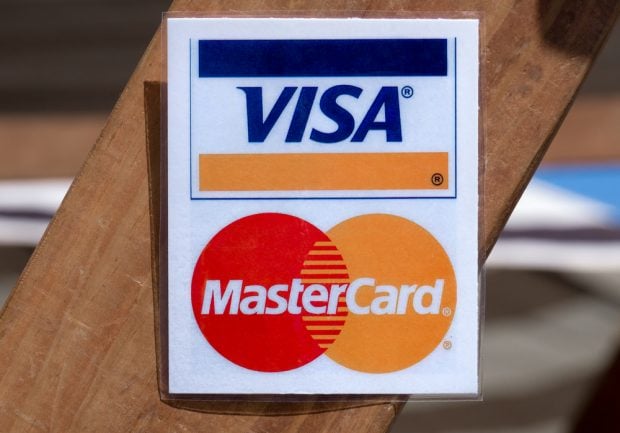This year saw a regulation capping the interchange card issuerswere able to earn on a debit card transaction come into effect forthe first time in history.
|Passed and signed into law in 2010, the legislation mandatingthe cap, colloquially known for its chief sponsor, Sen. RichardDurbin (D-Ill.), had been included relatively late in the processof drafting the Dodd-Frank package of financial industry regulatoryreforms. Controversial from the start, the amendment mandated thatdebit card issuers of more than $10 billion in assets would have tolive under the cap while those under $10 billion, including all butthree credit unions, would be exempt from the cap.
|In practice this meant that card processors needed to adopt twodifferent debit interchange schedules, which they did, but alsobrought what critics called excessive pressure on credit uniondebit interchange. A dual interchange system, critics charged,would not be sustainable over the long run and credit unions andsmaller banks would only see their debit interchange fall over timeto the same level as those institutions living under the cap.
|While this might still happen over time, the immediateconsequence of the interchange cap was to help furtherdifferentiate credit unions from larger banks as the banks began toeither cut back on free checking or charge fees on debit cards.Credit unions, generally, declined to do either.
|Even two of the three credit unions that are subject to the cap,the 3.8 million-member, $44.4 billion Navy Federal Credit Union,headquartered in Vienna, Va.; the 1.6 million-member, $23 billionState Employees' Credit Union, Raleigh, N.C.; and the 1million-member, $15.1 billion Pentagon Federal Credit Union,Alexandria, Va., reported they would not add any additional fees totheir checking or debit programs, though they said they would takean income hit from the cap.
|Consumers reacted strongly to the banks’ moves to recapturedebit interchange income, objecting particularly vociferously toBank of America's plans to charge a $5 monthly fee for the use ofits debit card. Eventually, these consumer objections coalescedinto a national movement, Bank Transfer Day.
|But even as credit unions wrestled with how to welcome newmembers’ fleeing higher debit fees, they also had to prepare theirown debit programs for the new rules. Although most credit unionswere exempt from the interchange cap, they were not exempt from therules about having a minimum of two unrelated debit processingnetworks on each of their cards. In practice this meant that somecredit unions had to take bids from new processors to add anothernetwork to their programs while others had to sort through severalnetworks and decide which ones to drop. In general, cardconsultants advised CUs to limit the number of debit networks theycarried in order to make it more difficult for retailers to lowerthe debit interchange.
|Consultants also urged credit unions to improve the monitoringof their debit card interchange so that they would be able tomeasure the impact of the cap, if any. Currently, many creditunions lack a basic understanding of their debit interchange andwould be unable to detect any potential loss.
|One worry that has not yet been realized has been the concernthat retailers might act to steer consumers away from CU-issueddebit cards because of their higher interchange fees, but oneCalifornia credit union that raised the possibility of suchsteering found its concerns did not pan out.
|Robert York, CEO of the 13,000-member, $108 million CaliforniaBear Credit Union, Los Angeles, wrote an email on Nov. 18 to otherCalifornia credit union CEOs reporting that some of the CU'smembers and employees had reported difficulty using their CU-issueddebit cards. He said some retailers appeared to want them to usecards issued by larger banks.
|York sent the email to see if any other CUs had seen the samething and reported that California Bear had received no positiveresponses. Further, one of the retailers named in his originalemail, the Regal Entertainment Group, parent company of RegalCinemas, denied outright that it had been trying to influence debitcard choice.
|“Our policy is to accept any and all payment cards–regardless ofissuer,” said David Ownby, chief financial officer at the RegalEntertainment Group. He also denied the company had a policy aboutrefusing debit cards based on their date of re-issuance.
|The other retailer York mentioned in the email, LA Fitness, achain of fitness and health centers, did not respond for commentabout the question.
|Craig Shearman, vice president of government relations for theNational Retail Federation, declined to comment on the specifics ofYork's email but pointed out that card economics made the allegations doubtful.
|“Most consumers might have a number of different credit cards intheir wallets or purses but usually only one debit card,” heremarked. “So if a retailer was going to try to steer a transactionto a different card that would most likely be a credit card wherethe swipe fees are higher.”
|But while the interchange cap's direct impact on CUs, at leastin 2011, appeared limited, the cap already has begun to reversesome of the progress the payment industry made in getting consumersto pay more often with cards than cash.
|According to media reports, merchants like coffee shops,newsstands, vending machine deployers and others have startedtrying to find ways to get consumers to pay with cash rather thandebit cards after card processors eliminated the interchangediscounts they had offered on transactions of less than $10.
|The loss of the discounts has meant that interchange ontransactions of below $10 has sometimes jumped from 2-3% to almost21%, which is the regulatory mandated debit interchange cap. Thishas led to merchants offering discounts for consumers who pay incash or, in some cases, deciding to only take cash.
|Should the trend continue, it will represent the most recent andobvious reversal of a tendency to move payments steadily furtheraway from cash and onto cards. In the last five years, the abilityto pay by debit card has appeared in the fast food industry, thetaxi industry and in vending machine sales.
|CFPB Tackled Many Issues
|Though it lacks a permanent director, that hasn’t prevented theConsumer Financial Protection Bureau from tackling a range ofissues–from credit card disclosures to mortgage forms–during itsfirst months of operation.
|The bureau, an independent agency housed inside the FederalReserve that began operating on July 21, received considerableattention when it announced an agreement with Pentagon FCU to test a simplified credit card form. The form isapproximately 1,100 words, compared with the average form which is5,500 words.
|It contains information such as interest rates, the costs ofbalance transfers and cash advances, and explains how interestrates are calculated. The form is also on the bureau’s web site andthe public can comment on it and make suggestions.
|The form is part of the bureau’s Know Before You Owe, program,designed to give consumers extensive information about the cost ofobtaining credit.
|Pentagon FCU is one of three credit unions–the other two areNavy Federal CU and State Employees of North Carolina CU–thatbecause they have assets of greater than $10 billion are subject tothe direct oversight of the CFPB on consumer protection matters.The bureau’s regulations are applicable to all credit unions butthe enforcement for most is handled by their safety and soundnessregulator.
|Credit card regulation will be a large part of the bureau’swork. During its first three months of operation, the CFPB said ithad received 5,074 complaints about credit. Of those, 13% wererelated to billing disputes, 11% concerned APRs and interest rates,and 10.8% were related to identity theft, fraud andembezzlement.
|Another part of the bureau’s Know Before You Owe, program is itswork in combining the mortgage disclosure forms required under theTruth in Lending Act and the Real Estate Settlement Procedures Act.The bureau is seeking input on the content of the form, and theagency has done focus groups in different parts of the country tohelp it further fine tune the form.
|The CFPB, which was created by the Dodd-Frank financial overhaulbill, is responsible for enforcing all or part of 14 consumerprotection laws. The laws include the Consumer Leasing Act, theElectronic Fund Transfer Act, the Equal Credit Opportunity Act, theFair Credit Reporting Act and the Truth in Lending Act.
|Until it has a permanent director, the agency can reviseexisting regulations but can’t issue new ones. It also can’tregulate non-bank entities such as payday lenders and mortgagecompanies.
|In December, the CFPB began a 90-day comment period to solicitinput on ways to change the rules it enforces so as to make iteasier for banks, credit unions and others to follow the rules.
|President Obama has nominated former Ohio Attorney GeneralRichard Cordray to run the agency but his confirmation has beenblocked by Senate Republicans. They have vowed to prevent theapproval of any head of the agency until there are structuralchanges to the agency, including having it run by a five-personboard, rather than by a single director.
|Complete your profile to continue reading and get FREE access to CUTimes.com, part of your ALM digital membership.
Your access to unlimited CUTimes.com content isn’t changing.
Once you are an ALM digital member, you’ll receive:
- Critical CUTimes.com information including comprehensive product and service provider listings via the Marketplace Directory, CU Careers, resources from industry leaders, webcasts, and breaking news, analysis and more with our informative Newsletters.
- Exclusive discounts on ALM and CU Times events.
- Access to other award-winning ALM websites including Law.com and GlobeSt.com.
Already have an account? Sign In
© 2024 ALM Global, LLC, All Rights Reserved. Request academic re-use from www.copyright.com. All other uses, submit a request to [email protected]. For more information visit Asset & Logo Licensing.









